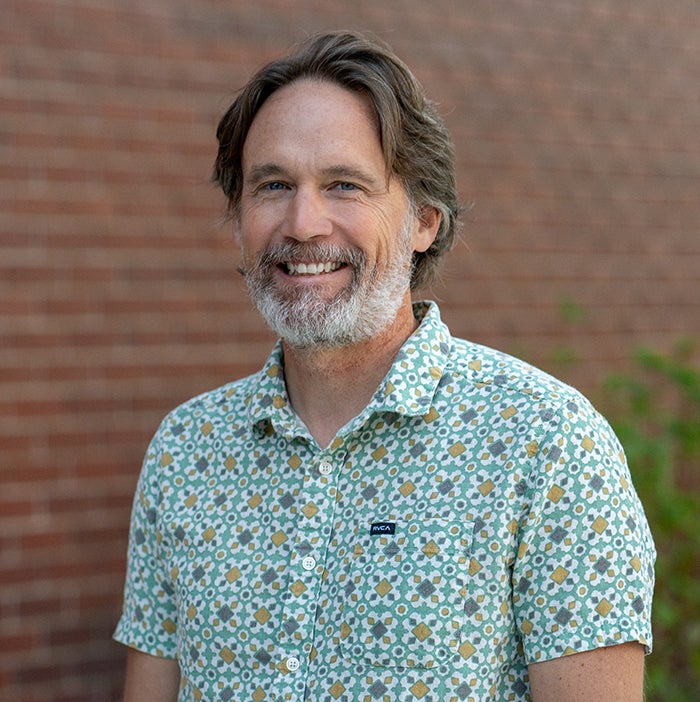By Jamie Fink
Todd Otanicar, a professor from the Department of Mechanical and Biomedical Engineering and an affiliate of the Center for Advanced Energy Studies, received a $400,000 award from the U.S. Department of Energy Solar Energy Technologies Office to pursue his innovative research to advance concentrated solar-thermal power research.

In recent years, the declining cost of solar technology along with incentives and other factors has made solar power more popular. Positioned to play a significant role in the battle against climate change, the demand for renewable energy sources is undoubtedly at a turning point.
While the solar sector continues to expand and flourish, climate change through rising temperatures and rise in natural catastrophes puts increased pressure on operating efficiently and for low cost. This drives developers to operate in more challenging conditions.
“This grant is pivotal for advancing our understanding of the extreme conditions faced by the receiver in a concentrating solar power plant. By studying real-time operational stresses, we aim to drive down costs and boost efficiency, helping to make solar energy more accessible and sustainable.” –Todd Otanicar
The funded research looks to extend digital image correlation methods to the extreme environments within solar receivers. This research could enhance the reliability and efficiency of critical concentrating solar power components. These components, such as receivers, reflectors, thermal energy storage, power blocks and support structures, are the key elements that make up a concentrating solar power plant.
The primary goal of Otanicar’s project is to develop a high-temperature and high-flux digital image correlation technique that allows for multi-scale measurement of strain fields in concentrating solar power receiver components. By leveraging advanced manufacturing methods, this research aims to reliably produce high-contrast patterns that can withstand the demanding conditions inside these facilities.
This advancement could significantly improve the longevity and operational efficiency of these systems, addressing industry-wide challenges posed by fluctuating temperature and solar flux conditions.
“Our understanding of the capabilities for the receiver’s withstanding high temperatures and intense solar flux distributions is crucial for developing innovative methods,” Otanicar said. “This research will not only push the boundaries of material resilience but also provide essential experimental data to overcome operational limitations and enable future advancements in solar power technology.”
Otanicar’s innovative project introduces a new methodology for strain measurement under the extreme conditions characteristic of solar receivers. Current measurement techniques face limitations when applied in high-temperature and high-flux environments.
By developing a reliable technique tailored to the plant conditions, this project could not only enhance concentrating solar power receiver efficiency but also provide valuable insights for improving other high-temperature components within solar-thermal systems. These advancements align with SETO’s goal of expanding applications and reducing costs through innovative technologies.
“This interdisciplinary project builds upon advanced materials and manufacturing methods developed in partnership with Idaho National Laboratory and the Department of Energy’s Advanced Sensors and Instrumentation Program,” said David Estrada, a professor in the Micron School of Materials Science and Engineering and Boise State’s associate director for the Center for Advanced Energy Studies. “Otanicar’s luminous leadership in the extremes of solar energy will help us extend what we have learned for strain measurements in nuclear environments to further advanced energy technologies vital to our nation’s energy security and independence. ”
Otanicar was selected as a part of the SETO Small Innovative Projects in Solar 2024 Funding Program, which provided more than $5 million for research and development projects that focus on novel, high-risk or high-impact ideas in this field and solar photovoltaic technologies laying the foundation for continued research. Otanicar’s project is one of several initiatives aimed at innovating across all aspects of these plants, including thermal energy storage, solar-thermal fuel systems and solar-thermal process heat for industrial decarbonization.
Looking ahead, the project team is eager to explore the potential applications of this technique across other components in concentrating solar power facilities and to continue developing innovative solutions that enhance the efficiency and reliability of solar power plants.
Otanicar leads Boise State’s Thermal Transport and Solar Energy Lab. His research team explores heat and mass transfer solutions for many applications, primarily the field of solar energy. Co-investigators on the grant include Center for Advanced Energy Studies affiliates Brian Jaques and Estrada and Zhangxian “Dan” Deng from the Department of Mechanical and Biomedical Engineering.